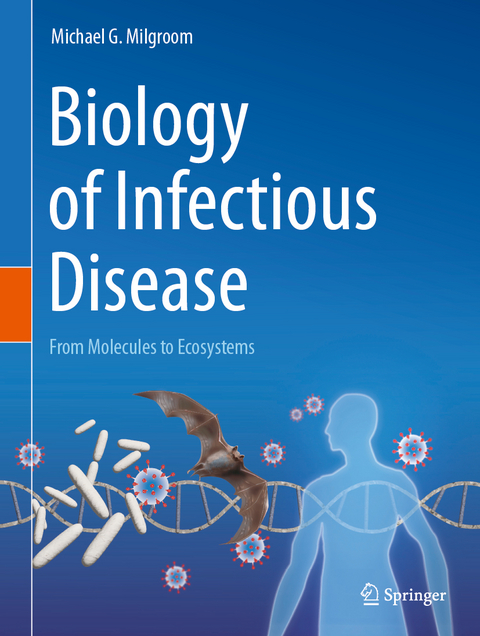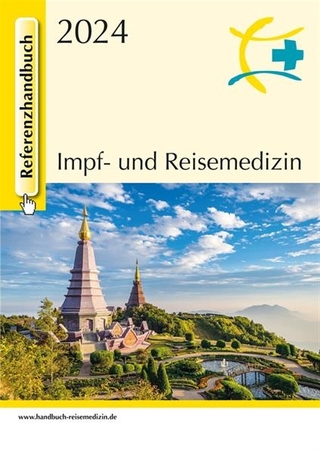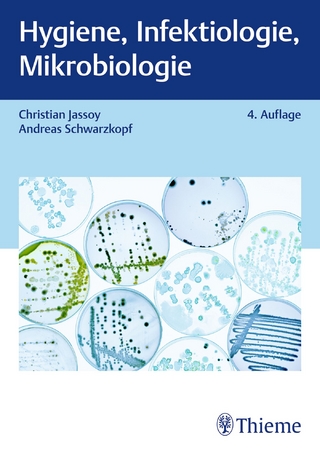
Biology of Infectious Disease
Springer International Publishing (Verlag)
978-3-031-38940-5 (ISBN)
Biology of Infectious Disease: From Molecules to Ecosystems is aimed at undergraduate and early graduate-level students in biology or public health, including pre-medical and pre-public-health students, who are interested in a broad introduction to infectious disease but do not have any previous background in microbiology or immunology.
Michael Milgroom joined the faculty in the Plant Pathology and Plant-Microbe Biology section of the School of Integrative Plant Science at Cornell University in 1987. His research interests were in epidemiology, ecology, genetics, evolution, and population genetics of fungal plant pathogens. For most of his academic career, he taught graduate-level and undergraduate-level courses in plant pathology. In 2015, he published a textbook titled Population Biology of Plant Pathogens: Genetics, Ecology, and Evolution, aimed at graduate students in plant pathology, which combined his teaching and research interests. In 2012 his teaching broadened beyond plant pathology to offer courses of interest to general biology students, particularly pre-med and pre-public-health students. He teamed up with a colleague to teach "Biology of infectious disease: From molecules to ecosystems", which inspired this book. He also co-taught a course for two years titled, "Infectious disease ecology and evolution." Milgroom retired from Cornell in January 2020-just as Covid-19 was being reported from Wuhan, China-and began writing this book based on his teaching experience.
, aimed at graduate students in plant pathology, which combined his teaching and research interests. In 2012 his teaching broadened beyond plant pathology to offer courses of interest to general biology students, particularly pre-med and pre-public-health students. He teamed up with a colleague to teach "Biology of infectious disease: From molecules to ecosystems", which inspired this book. He also co-taught a course for two years titled, "Infectious disease ecology and evolution." Milgroom retired from Cornell in January 2020-just as Covid-19 was being reported from Wuhan, China-and began writing this book based on his teaching experience.
, aimed at graduate students in plant pathology, which combined his teaching and research interests. In 2012 his teaching broadened beyond plant pathology to offer courses of interest to general biology students, particularly pre-med and pre-public-health students. He teamed up with a colleague to teach "Biology of infectious disease: From molecules to ecosystems", which inspired this book. He also co-taught a course for two years titled, "Infectious disease ecology and evolution." Milgroom retired from Cornell in January 2020-just as Covid-19 was being reported from Wuhan, China-and began writing this book based on his teaching experience.
, aimed at graduate students in plant pathology, which combined his teaching and research interests. In 2012 his teaching broadened beyond plant pathology to offer courses of interest to general biology students, particularly pre-med and pre-public-health students. He teamed up with a colleague to teach "Biology of infectious disease: From molecules to ecosystems", which inspired this book. He also co-taught a course for two years titled, "Infectious disease ecology and evolution." Milgroom retired from Cornell in January 2020-just as Covid-19 was being reported from Wuhan, China-and began writing this book based on his teaching experience.
p;book. He also co-taught a course for two years titled, "Infectious disease ecology and evolution." Milgroom retired from Cornell in January 2020-just as Covid-19 was being reported from Wuhan, China-and began writing this book based on his teaching experience.
1. Introduction to infectious disease.- 2. The germ theory paradigm 3. Host-microbe interactions and infectious disease.- 4. Viruses.- 5. Bacteria.- 6. Protozoa.- 7. Helminths.- 8. Fungi.- 9. Vertebrate immune system.- 10. Immunity in invertebrates, plants, and prokaryotes.- 11. Evasion and suppression of immunity.- 12. Vaccines, vaccination, and immunization.- 13. Microbiomes.- 14. Antimicrobial resistance.- 15. Vector biology.- 16. Epidemiology and SIR models.- 17. Evolution of pathogenicity and virulence.- 18. Disease ecology and emergence.- 19. The COVID-19 pandemic: A case study.- Index.
| Erscheinungsdatum | 28.11.2023 |
|---|---|
| Zusatzinfo | XV, 330 p. 184 illus., 177 illus. in color. |
| Verlagsort | Cham |
| Sprache | englisch |
| Maße | 210 x 279 mm |
| Gewicht | 1086 g |
| Themenwelt | Medizin / Pharmazie ► Medizinische Fachgebiete ► Mikrobiologie / Infektologie / Reisemedizin |
| Medizin / Pharmazie ► Studium | |
| Naturwissenschaften ► Biologie ► Mikrobiologie / Immunologie | |
| Schlagworte | AMR • Antimicrobial Resistance • Bacteria • Covid-19 • Fungi • Genomes • Germ Theory • helminths • Host defense • host-microbe interactions • immunity • infectious disease • Medical Microbiology • microbial suppression • Pandemic • Pathogens • Protozoa • Public Health • Vaccine • Virus |
| ISBN-10 | 3-031-38940-9 / 3031389409 |
| ISBN-13 | 978-3-031-38940-5 / 9783031389405 |
| Zustand | Neuware |
| Haben Sie eine Frage zum Produkt? |
aus dem Bereich


